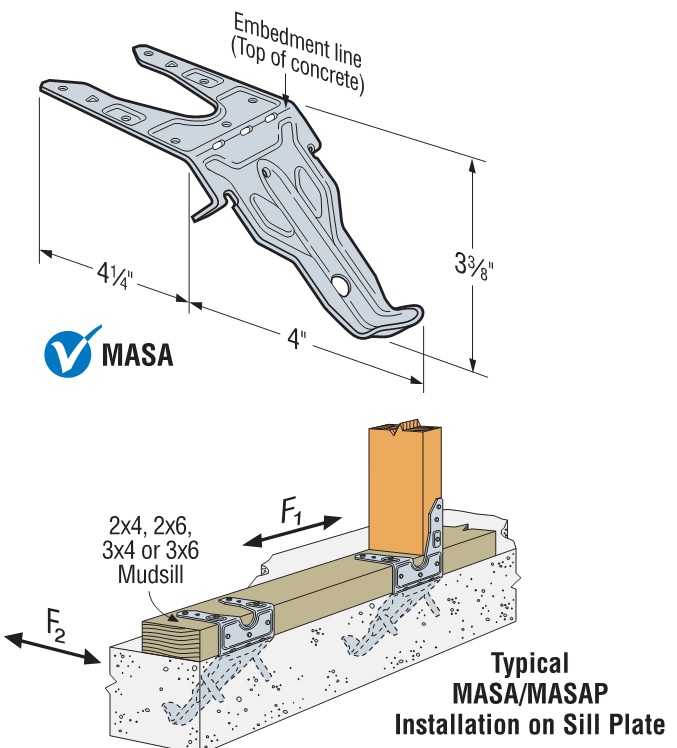

Where the object is placed is a major consideration due to the different load values. The larger the diameter- the higher holding values the anchor will have. The best holding values are achieved when the concrete is hard and the embedment into the concrete is deep. In most cases- it is the concrete that fails, not the anchor. The weakest link of a concrete anchor is the concrete in which it is placed. It is important to determine the diameter of the anchor needed from the weight of the object to be fastened to the concrete. Increased holding values will also be attained when the working end of a concrete anchor is on the far side of rebar. DESIGN OF ANCHOR BOLTS EMBEDDED IN CONCRETE MASONRY While these special rebar bits work well, they are fairly expensive and add extra work when placing anchors.

There is special rebar cutting bits that can be used when rebar is located in areas where the anchor must be placed. The rebar may get in the way when trying to place a concrete anchor deeply or it may cause problems when drilling a hole. Concrete reinforced with rebar may cause problems. This will create an unsupported edge which will reduce the holding values of the concrete anchors. It is important to avoid having the working end of the concrete anchor too close to the bottom of the concrete. It makes sense then that the larger the diameter- the larger the minimum embedment. As a rule of thumb, the smaller the diameter- the shorter the minimum embedment will also be. There is a minimum embedment with all concrete anchors which is determined by the diameter of the anchor being used. Standard concrete is less than 7, psi and high strength concrete is measured between 7, and 14, psi. For example, concrete that is designated as 3, psi concrete is concrete that is able to carry a compression stress of 3, psi after 28 days. The measurement is calculated by pouring concrete in a cylinder and then measuring the force needed to break the concrete after it is hardened. The compression strength of concrete is measured in psi, or pounds per square inch. A specific concrete anchor or fastener may not work in all applications. However, the reason there are a variety of concrete fasteners is that a variety of concrete also exists. Most other concrete fasteners will successfully work in concrete regardless of age. In some cases, concrete also becomes more abrasive as it ages. The older the concrete, the harder it gets and therefore the more difficult to drill into. The truth is that only concrete sidewalks and mixers exist! Green concrete, which is less than 28 days old, should not be drilled or anchored into. Sleeve Anchors for Attaching a Light to Concrete People wrongly call sidewalks "cement" and point out "cement trucks" and "cement mixers". The hydration hardens the concrete for years, which means that concrete gets stronger as it ages.

The cement and water harden and bind the aggregates into a solid mass over time through a process called hydration. Portland cement is not a brand name but rather a generic term for the type of cement used in most concrete. Concrete is a mixture of water, aggregates i. The words "concrete" and "cement" are often erroneously used as interchangeable terms.


 0 kommentar(er)
0 kommentar(er)
